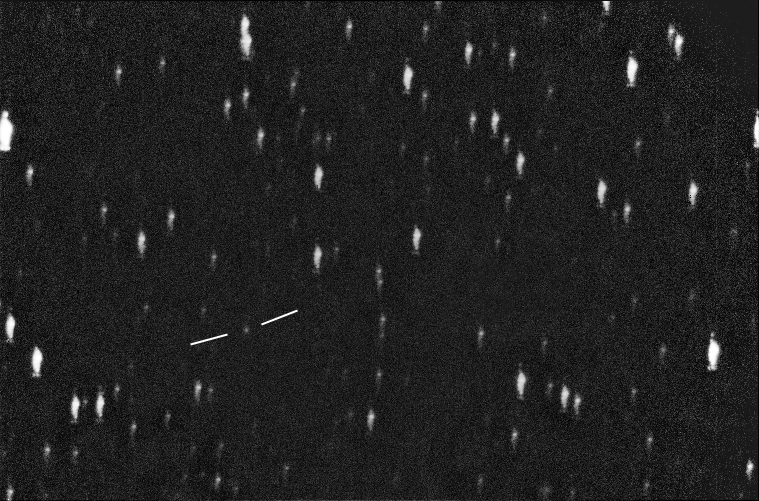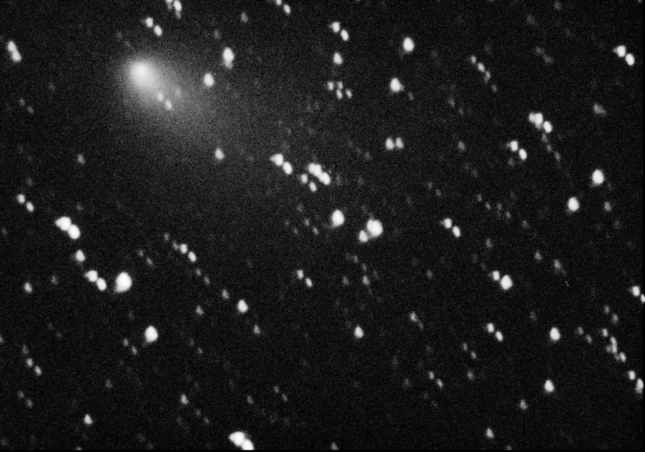
Comet 2000 WM1 LINEAR. November 6, 2001.
Combination of 4, 1 minute images, Meade 416XTE.
8" F/6.3 Meade LX200 schmidt-cassegrain at prime focus.
The second naked-eye comet of 2001 was actually discovered on November 16, 2000 by the LINEAR asteroid search program. Although initially well placed for northern hemisphere observers, as the comet approached perihelion it rapidly headed southwards and was best viewed from the southern hemisphere. Which was only to be expected since I was now in the northern hemisphere!!!!
The comet reached magnitude 12 in early September 2001and then around magnitude 5.5 by early December. By this time however it was moving rapidly southwards and was lost by mid-December. For southern hemisphere observers it peaked at around magnitude 3 although it was very close to the Sun. Following perihelion, the comet faded steadily and also headed back northwards, becomming accessible to northern observers during March 2002 as an 8th magnitude object. By the beginning of June the comet had faded below 14th magnitude.

At this time the comet was around magnitude 8.1 and brightening rapidly. The coma was well condensed and about 6' across. There was a faint tail visible, about 15' in length.
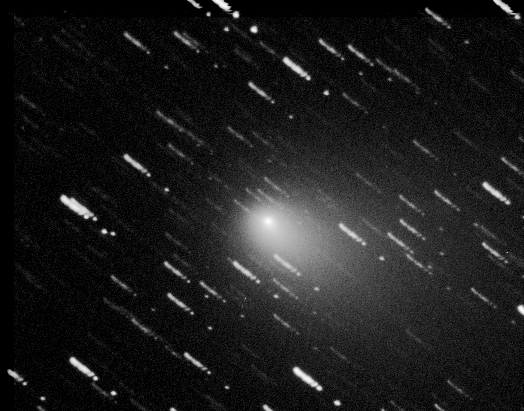
The comet had brightened noticeably from the previous observation and was now around magnitude 7.8. The coma was now about 8' across and there was about 20' of tail visible.
The image below is the same combination of images but processed with a median filter to minimise the stars and to show the comet better.
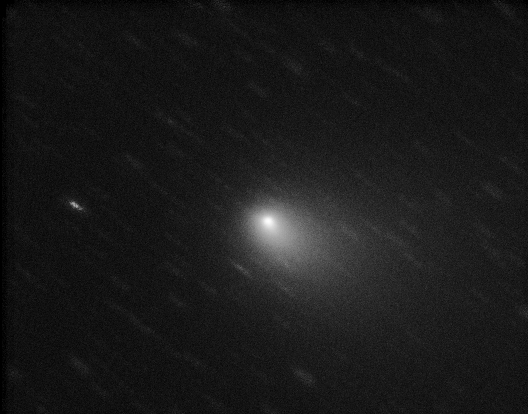
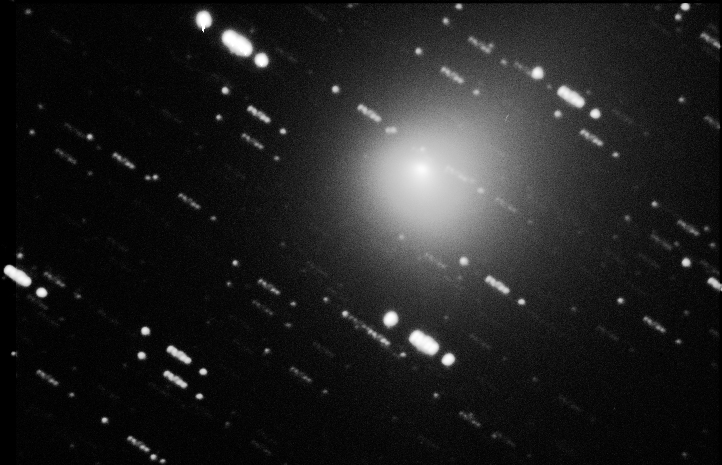
On this night, the comet was around magnitude 6.8. The coma was still well condensed but now some 10' across. Very little tail could be observed on this night.
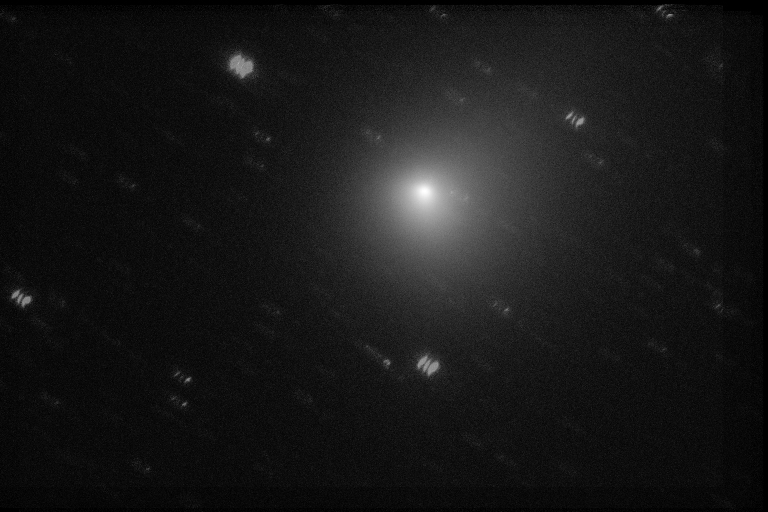
November 22 was my final opportunity to observe the comet before perihelion. The comet was around magnitude 6.1 with a 12' coma. Very little tail could be observed on this night.
My first opportunity to image the comet after it had reappeared from the southern sky was on March 26, 2002. The comet was around magnitude 7.3 and displayed a broad, faint dust tail around 0.5 degrees long.
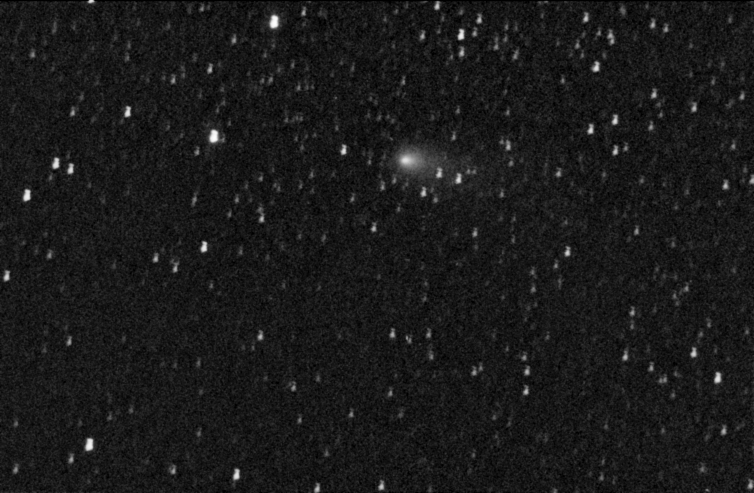
By the end of May, the comet had faded to below 12th magnitude and was becomming a difficult object for visual observation. The coma had now shrunk to only around 1.5' but the tail was still upwards of 10' in length.
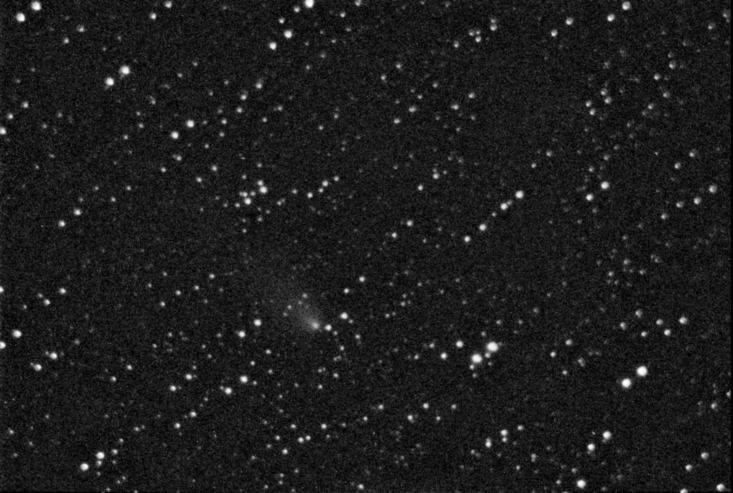
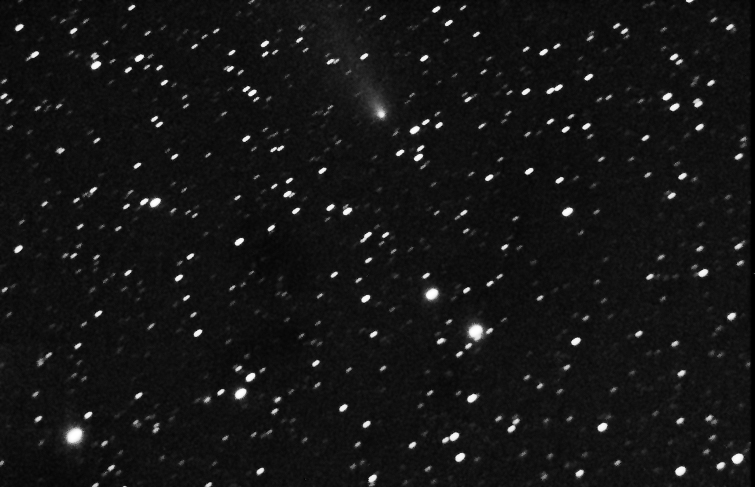
Comet 2000 WM1 LINEAR. May 22, 2002.
Combination of 5, 1 minute images, SBIG ST-8E CCD.
8" F/6.3 Meade LX200 schmidt-cassegrain at prime focus.
By June 16, the comet had faded to around 13.8 magnitude. However as can be seen in the image below, there was still a hint of a faint tail visible. (Heading below and slightly right on the comet.)
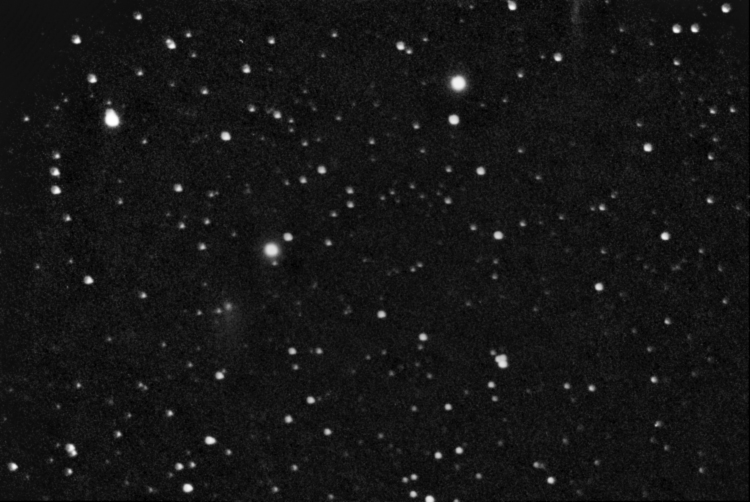
The comet continued to fade rapidly as it receeded from both the Earth and the Sun. By the middle of August, it had fallen below 17th magnitude and was all but invisible on CCD images taken with an 8" telescope.
